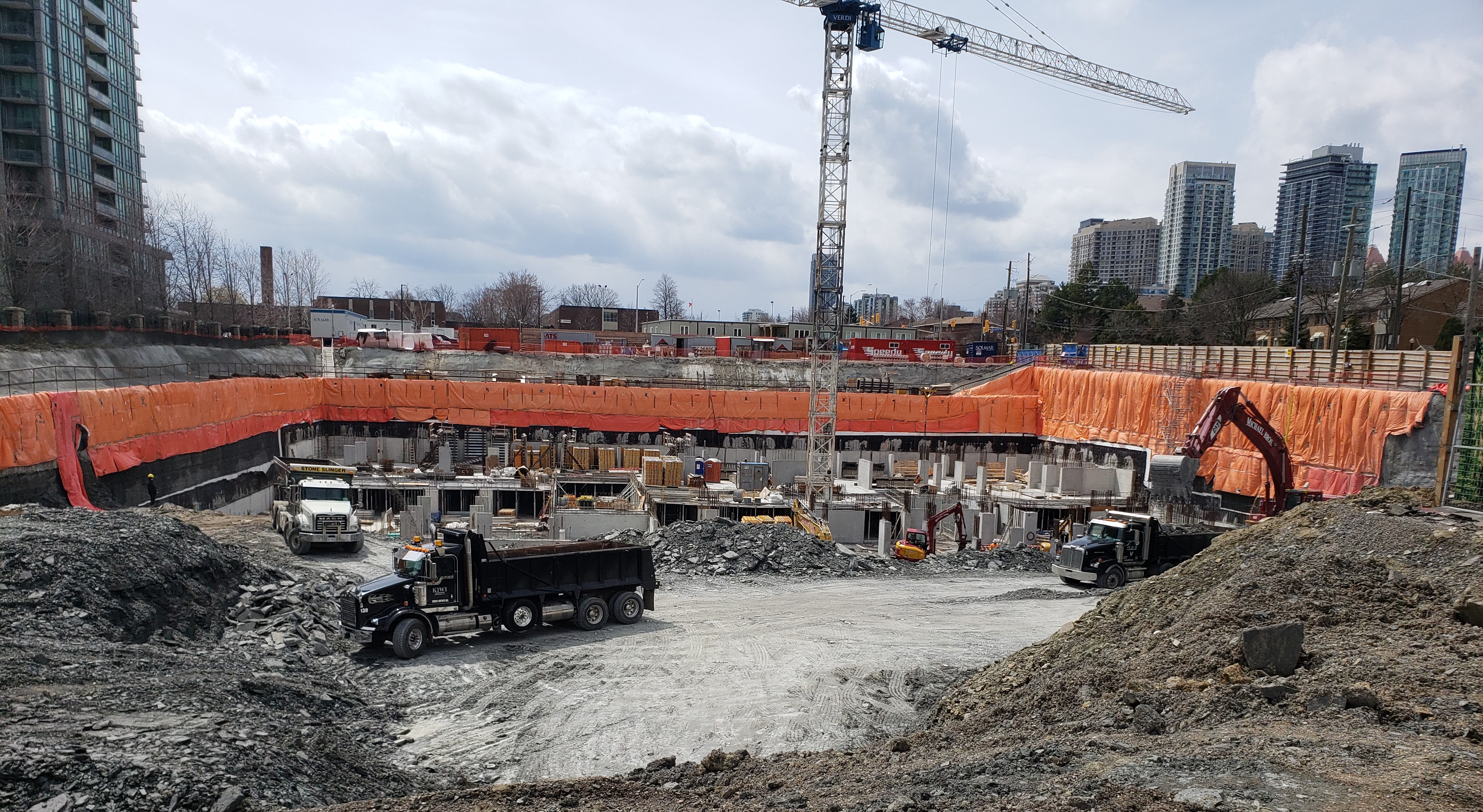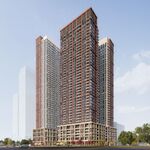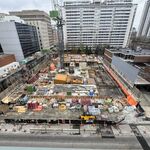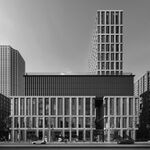Today we present a guest post from R. Scott Davie, President of Davie Real Estate, who has been a leader in the sales and marketing of new high rise and low rise projects around the Greater Toronto Area (GTA) for decades, and has represented many of the GTA’s top Developers. Davie recently wrote a book on the GTA Affordable Home Ownership Crisis.
* * *
There is much uncertainty in the direction of the residential GTA Real Estate market, as we exit the Covid-19 Virus quarantine and the region returns to work. Pre-virus, the region’s real estate sector was booming, being driven by strong immigration, very low interest rates, and a lessening of the Stress Test regulations. A shortage of supply, both in resale real estate listings and in available zoned land to build on, contrasted with the overwhelming demand to buy, put strong upward pressure on prices.
 Edge Towers construction site in Mississauga, image by R. Scott Davie
Edge Towers construction site in Mississauga, image by R. Scott Davie
This extreme shortage of inventory motivated the Provincial Government to declare residential construction an essential service. Excavation and concrete work has continued and workers have reported to me that they are actually working faster than normal due to the Covid-19 traffic effect. Dramatically less road traffic means that dump trucks and cement trucks can complete more runs each day.
So, although early construction efficiency increases, finishing construction has dramatically slowed due to social distancing and a portion of workers self quarantining at home.
The result of less finishing work being completed will lead to minor delayed closings on projects that are near completion, and there will be a bottleneck that will need to be overcome in the mid-term before the labour demand can resume to normal. A higher demand for labour will put upward pressure on labour costs which will be passed on to the end consumer.
On April 1st, the Federal Government increased the Carbon Tax by 50%. Since the cost to produce and deliver building materials like concrete, steel, glass, and drywall all require a lot of energy, the cost of materials will also be increasing, and be passed on to the end consumer.
We have seen in the last worldwide financial crisis—the 2008/2009 Banking Crisis—that consumer confidence was severely damaged. This resulted in a dramatic decrease in the volume of Real Estate sales, but due to the fact that supply was more constricted than demand, prices were actually higher year over year at the end of the crisis. So the volume of sales decreased but prices rose.
If the volume of sales slows in the pre-construction market, will Developers lower their prices? Developers must show a healthy Performa to their bank in order to obtain construction financing. It may be surprising to know that Developers profits are at fairly low rate. This is due to the record high cost of zoned land, lot levies, and the cost of labour and materials.
The cost of labour is on the rise due to demand, based on sales of homes and condos from the last two or three years that are now being built, and the cost of materials are on the rise due to the 50% increase to the carbon tax. Developers will have no choice but to wait out slow sales because without construction financing they will not be building. Developers are not in a position where they can lower their prices to inspire consumer confidence.
Consumer confidence has always been the wild card that drives the GTA real estate market, in good times and in bad. Consumer confidence is expected to be impacted for two to six months, as the economy bounces back. The majority of Canadians have continued working, worked from home, are on retirement pensions or social assistance and have been restricted from spending their money. Many business owners have been assisted with the Federal Government’s $40,000 interest free loan ($10,000 forgivable) and many individuals with the $2,000 CERB (Canada Emergency Response Benefit) payments. Without minimizing the seriousness of the devastation that many have experienced, they are the minority of Canadian earners. The wealthy, who have healthy equity in their homes or investment properties, are in a strong position to mitigate their Covid-19 loses with refinancing.
The majority of GTA residents are anxious to return to normal life and normal spending activities. New construction projects have been delayed and most residents are not listing their homes for sale since the quarantine began in March. This further restricts supply throughout the GTA for residents that are ready to buy in the short term.
New pre-construction projects may take a little longer to sell in the mid-term, but due to
- healthy immigration
- low interest rates, and a lessening of the Stress Test regulations
- a shortage of zoned land
- and the record high cost of construction labour, materials, and lot levies—
prices are on the rise.
During the Banking Crisis, the stock market dropped by 40% to 60%, while Real Estate prices rose. In good times and bad, real estate is the safest place to invest money. Sales volume will be down in the short to mid-term but prices are rising. There is more of a shortage of available properties than willing buyers.
One thing is certain, in a few years we will not be able to afford to buy the same size property in the same location as we can today. Now is the time to buy.
* * *
UrbanToronto has a new way you can track projects through the planning process on a daily basis. Sign up for a free trial of our New Development Insider here.

 4.3K
4.3K 








































